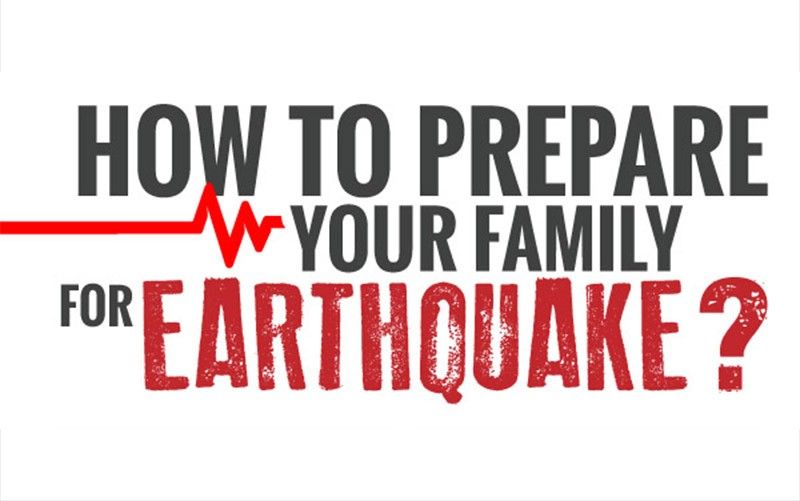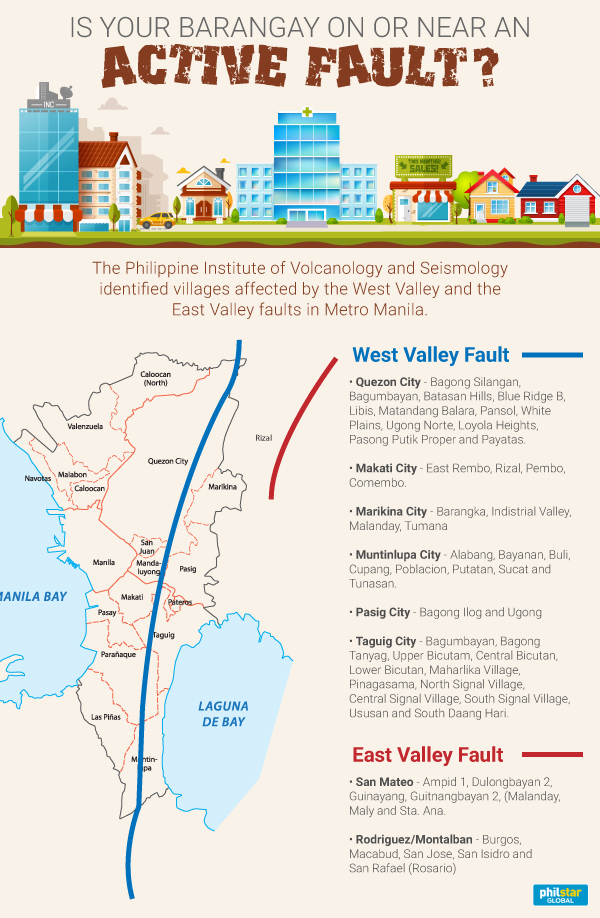Phivolcs: What to do when the 'Big One' comes

MANILA, Philippines — In light of the recent earthquakes in Batangas and Lanao, the Philippine Institute of Volcanology and Seismology (Phivolcs) released a primer on what to do when a sizeable earthquake or the “Big One” strikes Metro Manila.
Strong ground shaking, said Phivolcs, may cause extensive damage to, or even the collapse of houses, buildings, bridges, and other infrastructure. Collapsed structures account for most of the casualties during a strong earthquake. Falling objects may also cause injuries.
Other life-threatening hazards include landslides, rock falls, and other mass movements in mountainous or hilly areas. Sandy areas near the coast or riverbanks may also experience soil liquefaction.
The best course of action, Phivolcs said, is preparedness. “The damaging effects of earthquakes can be minimized if we prepare ourselves for the event. Because a large-magnitude earthquake, either from active faults in Luzon of the Manila Trench, may affect Batangas as a whole, it is always prudent to prepare for such eventuality.”



Checklist of what to have in your 72-hour survival kit. Philstar.com/File
Earthquake swarm in Batangas
According to Phivolcs’ April 2017 primer, a phenomenon known as “earthquake swarm” is currently happening in Batangas.
“An earthquake swarm is a burst of earthquake activity clustered in a specific area in a short period of time due to movement of a fault. The Batangas swarm started on 4 April at 8:58 p.m., and is still ongoing to date,” Phivolcs explained.
Large-magnitude quakes, according to Phivolcs, have affected Batangas in the past. The biggest one was a magnitude 7.6 in 1852.
The province, said Phivolcs, is one of the most seismically active areas in the Philippines. The current series of earthquakes in Batangas can be attributed to the movement of an unnamed local fault in the vicinity of the Tingloy-Mabini area.
These present quakes, the agency said, do not indicate volcanic activity. “Although Taal Volcano is located approximately 30 kilometers from Mabini, Batangas, the present network of instruments located in and around Taal Volcano shows no indication of any significant change of monitoring parameters suggesting renewed magmatic activity.”
The recent earthquake, too, does not trigger a destructive tsunami.
“Small to moderate magnitude earthquake events can still occur in the following days and weeks,” the agency warned.



















